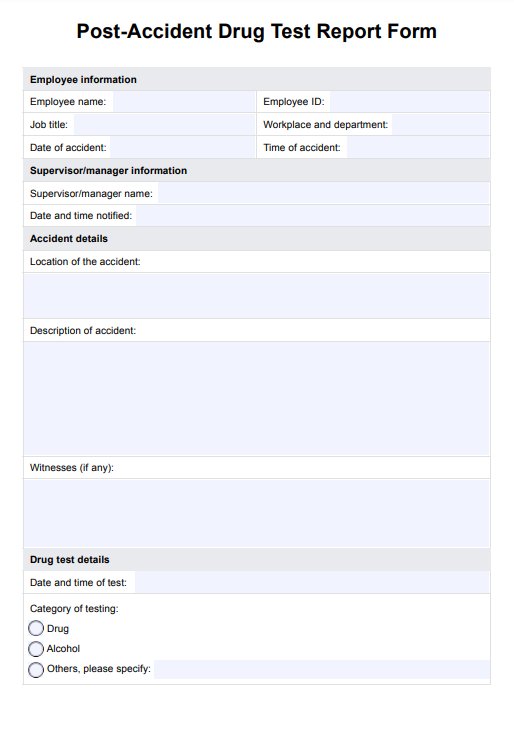A post-accident drug test is a screening promptly administered after a workplace incident to determine if drug use or alcohol played a role. It helps in understanding the potential contributing factors or specific circumstances to an accident, promoting workplace safety and accountability.

Post-Accident Drug Test
Easily document workplace incidents with our Post-Accident Drug Test Report Form. Streamline reporting and maintain safety. Download your form today!
Post-Accident Drug Test Template
Commonly asked questions
"Post-accident" refers to the period or events that occur after an accident. It often involves actions like medical care, investigations, and recovery efforts to address the consequences of the accident.
Drug or alcohol testing is conducted using various methods, such as a urine test, which detects substances or their metabolites, and a blood test, which measures precise levels of drugs or alcohol. Other methods include a breath test for alcohol, a hair test for detecting long-term drug use, and a saliva test for recent drug or alcohol intake.
EHR and practice management software
Get started for free
*No credit card required
Free
$0/usd
Unlimited clients
Telehealth
1GB of storage
Client portal text
Automated billing and online payments











